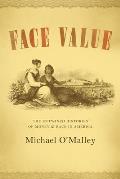The New New Teen Titans
DC Comics has started to promote an alternative version of its Teen Titans brand, to debut this fall. Teen Titans: Earth One, is what for the past quarter-century would have been called an “Elseworlds” story, and prior to that an Earth-Two or imaginary tale. It uses the familiar brand names but is outside of the current main continuity, thus allowing more latitude in storytelling. Paradoxically, DC is creating multiple “Earth Ones” for its main brands.
The main creators of this book will be writer Jeff Lemire and artists Terry and Rachel Dodson, and Lemire gave an interview to Comic Book Resources this week. As usual in such promotional interviews, the conversation is all about describing how wonderful the story will be while avoiding as many specifics as possible.
- This story is clearly inspired by the Marv Wolfman–George Pérez New Teen Titans series of the 1980s. Lemire told CBR: “Marv Wolfman and George Pérez were the first creators whose work I followed avidly. ‘The New Teen Titans’ from the ’80s was like my Bible as a kid. I read every issue over and over and over again.”
- However, one of the major themes of that series—inheritance—will be less in evidence because the new team won’t include such protégés of older heroes as Robin/Nightwing, Kid Flash, and Wonder Girl. In the new story’s world, these heroes are the first generation to have superpowers. (Of course, they might still have problematic parents.) That said, Beast Boy/Changeling, created in 1965 as a sort of mascot of the Doom Patrol, will be in this new story; he’ll have his old green coloring but presumably a new backstory.
- The team includes new versions of several Wolfman/Pérez creations from the ’80s: Cyborg, Raven, Starfire, Terra, Jericho, and Deathstroke. That helps DC maintain the viability of those trademarks. However, Lemire is promising surprises with several characters’ backstories, so readers can’t make assumptions based on past versions.
- Lemire has “been done [with] this book for over a year.” As a standalone volume rather than an ongoing magazine series, it needed a longer lead time for the art, so DC has kept the project under wraps until now. If the book proves to be a hit, Lemire is obviously up for a sequel—though that could presumably take another year or two.


















